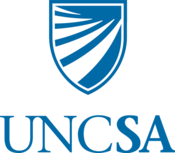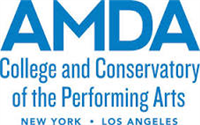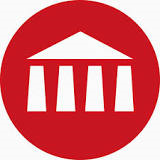What do they do?
Create new dance routines. Rehearse performance of routines. May direct and stage presentations.
Also known as:
Ballet Director, Choreographer, Dance Director, Dance Maker, Musical Choreographer
-
12.5%
Change
Ranks #18 in job growth rate10Job Openings
Ranks #23 in net job growth
-
University of North Carolina School of the Arts
Winston Salem, NC
-
American Musical and Dramatic Academy
New York, NY
-
The Juilliard School
New York, NY
-
Point Park University
Pittsburgh, PA
-
The University of the Arts
Philadelphia, PA
Looking for colleges that offer a specific major? Use the College Match Tool to find your best-matched schools and discover your estimated Net Price!
- Doctorate or Professional Degree (<1%)
- Master's degree (4%)
- Bachelor's degree (28%)
- Associate's degree (6%)
- Some college, no degree (21%)
- High school diploma equivalent (34%)
- Less than high school diploma (5%)
Most Popular Majors that prepare Choreographers
-
#1
-
Degrees Granted
2,426
-
Female Students
2,149
-
Male Students
277
-
Median Starting Salary
$38,200
-
-
#2
-
Degrees Granted
1,076
-
Female Students
721
-
Male Students
355
-
Median Starting Salary
$37,200
-
-
#3
-
Degrees Granted
75
-
Female Students
67
-
Male Students
8
-
Median Starting Salary
$38,200
-
-
#4
-
Degrees Granted
41
-
Female Students
35
-
Male Students
6
-
Median Starting Salary
$38,200
-
People in this career often have these skills:
- Instructing - Teaching others how to do something.
- Active Listening - Giving full attention to what other people are saying, taking time to understand the points being made, asking questions as appropriate, and not interrupting at inappropriate times.
- Speaking - Talking to others to convey information effectively.
- Monitoring - Monitoring/Assessing performance of yourself, other individuals, or organizations to make improvements or take corrective action.
- Coordination - Adjusting actions in relation to others' actions.
- Critical Thinking - Using logic and reasoning to identify the strengths and weaknesses of alternative solutions, conclusions, or approaches to problems.
- Social Perceptiveness - Being aware of others' reactions and understanding why they react as they do.
- Reading Comprehension - Understanding written sentences and paragraphs in work-related documents.
- Judgment and Decision Making - Considering the relative costs and benefits of potential actions to choose the most appropriate one.
- Time Management - Managing one's own time and the time of others.
- Learning Strategies - Selecting and using training/instructional methods and procedures appropriate for the situation when learning or teaching new things.
- Active Learning - Understanding the implications of new information for both current and future problem-solving and decision-making.
People in this career often know a lot about:
- Fine Arts - Knowledge of the theory and techniques required to compose, produce, and perform works of music, dance, visual arts, drama, and sculpture.
- Administration and Management - Knowledge of business and management principles involved in strategic planning, resource allocation, human resources modeling, leadership technique, production methods, and coordination of people and resources.
People in this career often have talent in:
- Gross Body Coordination - The ability to coordinate the movement of your arms, legs, and torso together when the whole body is in motion.
- Oral Comprehension - The ability to listen to and understand information and ideas presented through spoken words and sentences.
- Oral Expression - The ability to communicate information and ideas in speaking so others will understand.
- Fluency of Ideas - The ability to come up with a number of ideas about a topic (the number of ideas is important, not their quality, correctness, or creativity).
- Originality - The ability to come up with unusual or clever ideas about a given topic or situation, or to develop creative ways to solve a problem.
- Multilimb Coordination - The ability to coordinate two or more limbs (for example, two arms, two legs, or one leg and one arm) while sitting, standing, or lying down. It does not involve performing the activities while the whole body is in motion.
- Gross Body Equilibrium - The ability to keep or regain your body balance or stay upright when in an unstable position.
- Speech Clarity - The ability to speak clearly so others can understand you.
- Written Comprehension - The ability to read and understand information and ideas presented in writing.
- Problem Sensitivity - The ability to tell when something is wrong or is likely to go wrong. It does not involve solving the problem, only recognizing that there is a problem.
- Deductive Reasoning - The ability to apply general rules to specific problems to produce answers that make sense.
- Trunk Strength - The ability to use your abdominal and lower back muscles to support part of the body repeatedly or continuously over time without "giving out" or fatiguing.
- Stamina - The ability to exert yourself physically over long periods of time without getting winded or out of breath.
- Extent Flexibility - The ability to bend, stretch, twist, or reach with your body, arms, and/or legs.
- Visualization - The ability to imagine how something will look after it is moved around or when its parts are moved or rearranged.
- Dynamic Strength - The ability to exert muscle force repeatedly or continuously over time. This involves muscular endurance and resistance to muscle fatigue.
- Speech Recognition - The ability to identify and understand the speech of another person.
- Inductive Reasoning - The ability to combine pieces of information to form general rules or conclusions (includes finding a relationship among seemingly unrelated events).
People in this career often do these activities:
- Train others on performance techniques.
- Determine presentation subjects or content.
- Choreograph dances.
- Monitor current trends.
- Practice athletic or artistic skills.
- Study scripts to determine project requirements.
- Coordinate artistic activities.
- Audition or interview potential performers or staff members.
- Develop artistic or design concepts for decoration, exhibition, or commercial purposes.
- Evaluate skills of athletes or performers.
- Manage operations of artistic or entertainment departments or organizations.
This page includes data from:

 Occupation statistics: USDOL U.S. Bureau of Labor Statistics Occupational Employment Statistics
Occupation statistics: USDOL U.S. Bureau of Labor Statistics Occupational Employment Statistics









